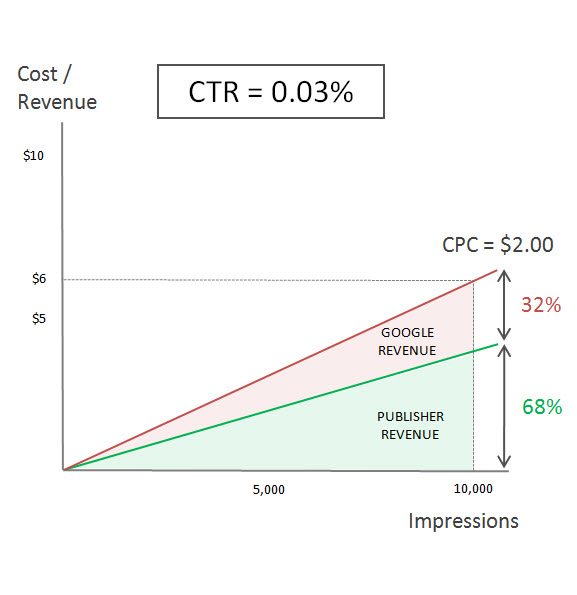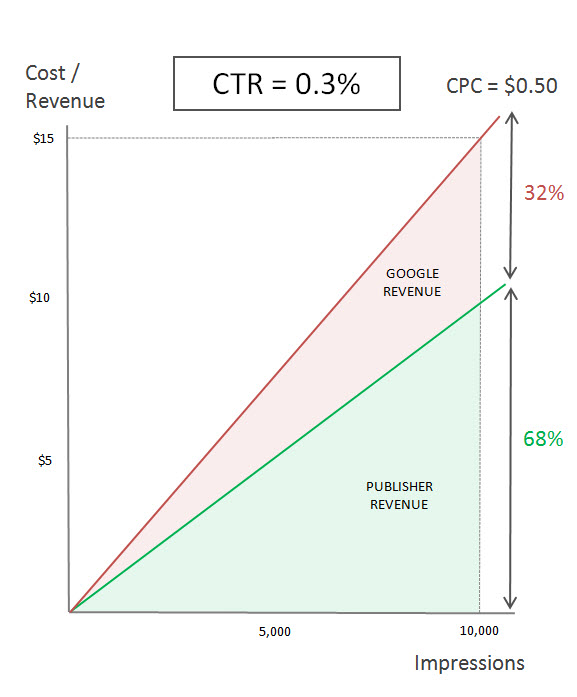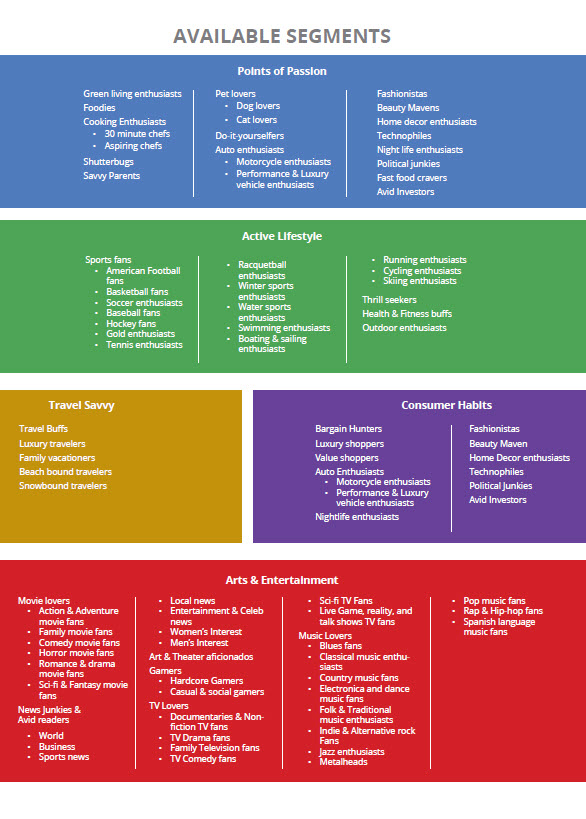
Google Display Network: Proof That a Higher CTR is Better For Everyone
22 August 2013Suppose you wanted to run a marketing campaign on the Google Display Network. You upload a set of image ads, specify your targeting options, and let Google serve your ads on publishers which Google believes are relevant to your targeting options.
Let’s say you’re willing to pay $2.00 per click. Your ads receive 10,000 impressions and achieve a click through rate (CTR) of 0.03%, which very typical for a traditional display campaign. This means you, the advertiser, will receive 10,000 impressions x 0.03% CTR = 3 clicks.
Since publishers receive 68% of revenue, total revenue from the 10,000 impressions is split as follows:
- Publisher: 3 clicks x $2.00 CPC x 68% = $4.08
- Google: 3 clicks x $2.00 CPC x 32% = $1.92
The revenue received by Google and the publisher is highlighted in the red and green shaded areas below.
Now let’s see what happens if the advertiser were to achieve a 10x higher CTR of 0.3% with more engaging mage ads and more relevant targeting settings. Let’s also assume that the advertiser is now willing to pay only $0.50 per click – only a quarter that of the previous example.
Again, your ads receive 10,000 impressions. However, with the higher CTR of 0.3%, you, the advertiser, will receive 10,000 impressions x 0.3% CTR = 30 clicks. Total revenue from the 10,000 impressions would be split as follows:
- Publisher: 30 clicks x $0.50 CPC x 68% = $10.20
- Google: 30 clicks x $0.50 CPC x 32% = $4.80
Again, the revenue received by Google and the publisher is highlighted in the red and green shaded areas below.
Notice how the shaded areas for the publisher and Google have both increased!
Even though the cost per click has fallen from $2.00 to $0.50, the publisher and Google are now both much better off.
For the same 10,000 impressions:
- Publisher’s revenue has increased from $4.08 to $10.20
- Google’s revenue has increased from $1.92 to $4.80
And since the advertiser is now only paying $0.50 per click compared to $2.00 per click, each visitor to their website is only costing them a fraction of the price.
Higher CTR = Better For Everyone
Knowing that ads which receive a higher CTR will generate more revenue for Google and the publisher for every 10,000 impressions, Google will show ads which receive a higher CTR more often.
Even if the advertiser is willing to pay less per click – as we have seen in the example above – as long as the revenue generated per 10,000 impressions is higher than the next advertiser, Google will favour your ads and give you more impressions.
In fact, as long as your CPC bid is at least $0.20 (using the same example), Google and the publisher will generate more revenue with a CTR of 0.3% than a 10x higher CPC bid of $2.00 and a measly CTR of 0.03%.
What This Means for Advertisers
Essentially, the higher the CTR your ads can achieve, the more impressions your ads will be eligible to receive, and the lower the cost per click price you will need to pay for each visitor to your website.
Since a high CTR is so important, below are some tips to help you achieve a high CTR:
- Create engaging ads: Just like search ads, creative which is engaging, relevant, and has a tangible call to action is likely to help your CTR.
- Rotate your ads: Regularly create different ads to keep your messages fresh. No-one likes seeing the same ads again and again.
- Frequency capping: Set a frequency cap of 5-10 impressions per unique user per campaign per day to avoid ad fatigue. Again, keeping your ads fresh will have a positive effect on CTR.
- Remarketing: Instead of targeting content, remarketing allows you to target people. Since people viewing your display ads will have previously visited and engaged with your website, your ads will be more relevant, and are likely to achieve a higher CTR, often over 10x higher than traditional display campaigns.
- Companion ads: Currently in beta, companion ads again allow you to target people rather than content. If a visitor arrives on a publisher website after making a search on any search engine, Google extracts the keyword from the referring URL. If that keyword matches one of your chosen keywords, your image ad can be displayed. Companion marketing is a great way to connect a highly-relevant at the moment they make a relevant search, and higher relevancy leads to higher CTR.
- Affinity segments: Again, currently in beta, affinity segments once again allow you to target people rather than content. Instead of targeting websites, targeting people based on pre-defined segments (based on recent searching habits) will help connect your image ads will a more relevant audience, having a positive effect on CTR.



